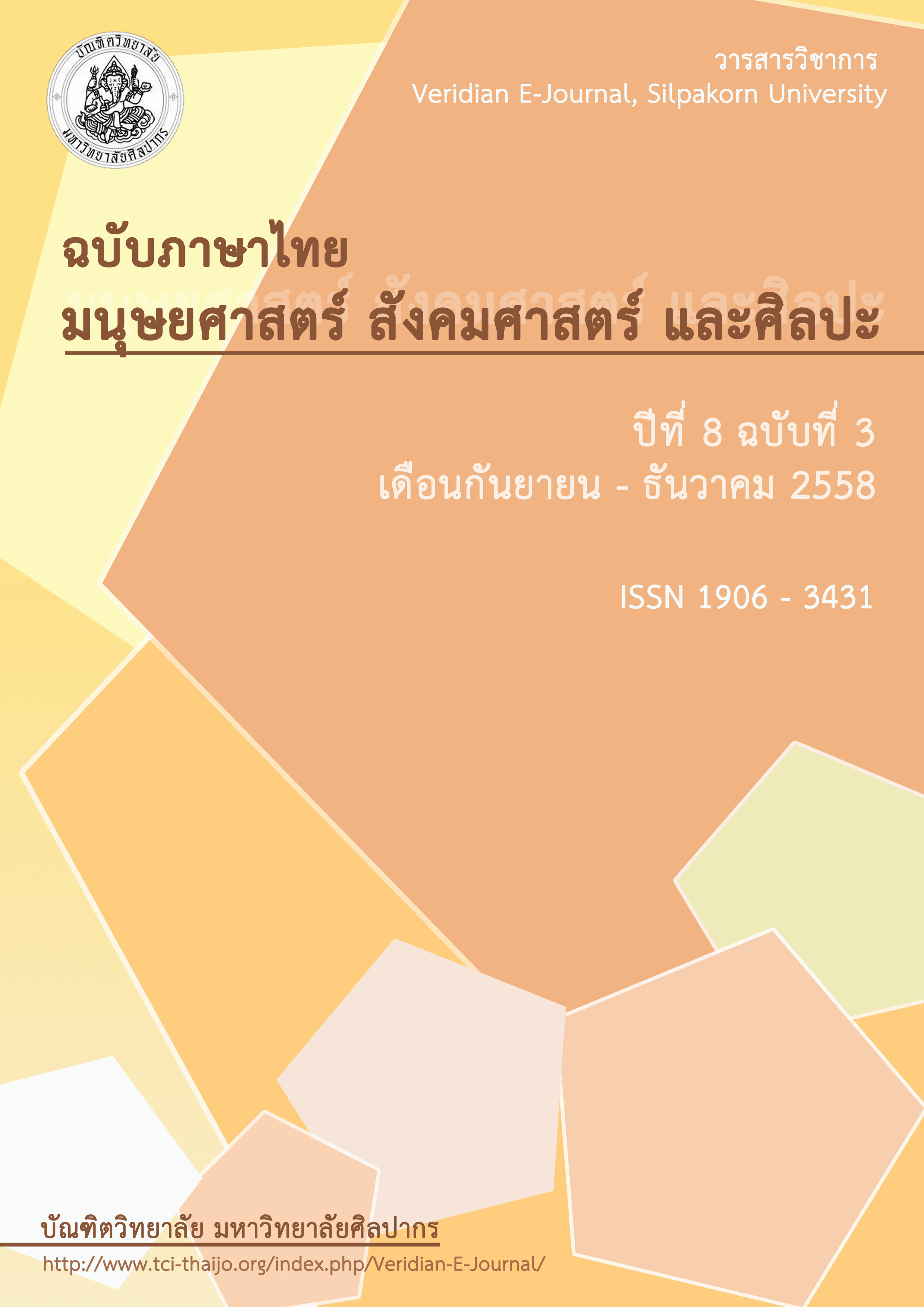การเสนอตัวแบบเพื่อลดความวิตกกังวลของผู้ติดเชื้อเอชไอวี โรงพยาบาลสมุทรสาคร
Main Article Content
Abstract
บทคัดย่อ
การวิจัยครั้งนี้มีวัตถุประสงค์เพื่อเปรียบเทียบความวิตกกังวลของผู้ติดเชื้อเอชไอวีกลุ่มทดลองก่อนและหลังการเสนอตัวแบบเพื่อลดความวิตกกังวลของผู้ติดเชื้อเอชไอวี และเพื่อเปรียบเทียบความวิตกกังวลของผู้ติดเชื้อเอชไอวีกลุ่มทดลองและกลุ่มควบคุมหลังการทดลอง ตัวอย่างที่ใช้ในการศึกษาครั้งนี้เป็นผู้ติดเชื้อเอชไอวีเพศหญิงที่รับเชื้อมาจากสามี และผ่านการเข้าร่วมกิจกรรมการจัดการความรู้โดยเน้นผู้ป่วยเป็นสำคัญของโรงพยาบาลสมุทรสาคร โดยผู้วิจัยได้คัดเลือกตามคุณสมบัติที่กำหนดไว้ จากนั้นให้ผู้ติดเชื้อเอชไอวีสมัครใจเข้าร่วมกิจกรรมจำนวน 12 คน และใช้วิธีการสุ่มอย่างง่ายด้วยการจับฉลากเข้ากลุ่มทดลองจำนวน 6 คน และกลุ่มควบคุมจำนวน 6 คน การทดลองประกอบด้วย 3 ระยะ คือ ระยะก่อนทดลอง ระยะทดลอง และระยะหลังทดลอง โดยทุกขั้นตอนดำเนินการสัปดาห์ละ 1 วัน ระยะเวลาครั้งละ 1 ชั่วโมง เครื่องมือที่ใช้ในการวิจัย ได้แก่ 1) กิจกรรมการเสนอตัวแบบเพื่อลดความวิตกกังวลของผู้ติดเชื้อเอชไอวีที่ผู้วิจัยสร้างขึ้น ประกอบด้วย ตัวแบบวีดีทัศน์เกี่ยวกับการลดความวิตกกังวล 3 ด้าน ได้แก่ ด้านภาวะโรค ด้านครอบครัว ด้านสังคม และตัวแบบที่มีชีวิตจริง จำนวน 2 คน 2)แบบสอบถามความวิตกกังวลสำหรับผู้ติดเชื้อเอชไอวี สถิติที่ใช้ในการวิจัยได้แก่ การแจกแจงความถี่ และค่าเฉลี่ย
ผลการวิจัยพบว่า
1) ผู้ติดเชื้อเอชไอวีในกลุ่มทดลองทุกคนมีความวิตกกังวลหลังการทดลองต่ำกว่าก่อนการทดลอง โดยในภาพรวมมีค่าเฉลี่ยหลังการทดลองเท่ากับ 2.27 และก่อนการทดลองเท่ากับ 3.77
2) หลังการทดลองกลุ่มทดลองมีความวิตกกังวลต่ำกว่ากลุ่มควบคุมทุกด้าน โดยในภาพรวมหลังการทดลองกลุ่มทดลองมีค่าเฉลี่ยเท่ากับ 2.27 และกลุ่มควบคุมมีค่าเฉลี่ยเท่ากับ 3.15
Abstract
This study aimed to compare the anxiety of the experimental group of HIV patients before and after using the anxiety reduction model in HIV patients and to compare the anxiety of the experimental group of HIV patients with the control group after using the anxiety reduction model. Twelve female patients with HIV infection from their husbands were the sample group and had already participated in the Patient-centered Care Program organized by Samutsakhon Hospital. Their involvement in this study was based on voluntary compliance and qualification criteria. The simple random sampling drew out six patients for the experimental group and the other six for the control group. Every process takes one hour each time and one day per week., had three stages: before; after and; in between. Two tools were utilized for the intervention. First, it was the activity that facilitated the use of anxiety reduction model developed by this study’s researcher. The model included the video and real-existing types. The video type presented the reduction of anxiety in three dimensions, namely disease, family and society, while the real-existing was represented by two persons. The second tool was the questionnaire for HIV patients. Data were analysed by Frequency Distribution and arithmetic mean.
This study reveals the following findings.
1) Anxiety of all HIV patients in the experimental group reduced after experiment (mean=2.27) when comparing to before experiment (mean=3.77).
2) The experimental group (mean=2.27) experienced the anxiety in all aspects lower than the control group (mean= 3.15).

